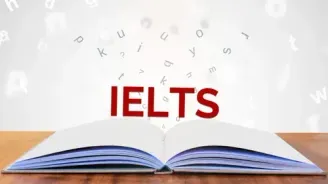Talking Point Reading Answer Passage
Talking Point Reading Answer Passage
Paragraph A. Learning a second language fuels children’s intelligence and makes their job prospects brighter. But the fact is, in New Zealand, as in many other English-speaking countries, speakers of two or more languages are in the minority. Eighty-four per cent of New Zealanders are monolingual (speakers of only one language). This leaves a small number who claim to speak two or more languages - a small percentage of whom were born in New Zealand.
Paragraph B. No matter how proud people are of their cultural roots, to speak anything other than English is a marker of difference here. That’s why eight-year-old Tiffany Dvorak no longer wishes to speak her mother tongue, German, and eight-year-old Ani Powell is embarrassed when people comment on the fact that she is able to speak Maori *. As Joanne Powell, Ani’s mother, points out: ‘In Europe, it’s not unusual for kids to be bilingual. But, if you speak another language to your children in New Zealand, there are some people who think that you are not helping them to become a member of society.’
Paragraph C. But in fact, the general agreement among experts is that learning a second language is good for children. Experts believe that bilinguals - people who speak two languages - have a clear learning advantage over their monolingual schoolmates. This depends on how much of each language they can speak, not on which language is used, so it doesn’t matter whether they are learning Maori or German or Chinese or any other language.
Paragraph D. Cathie Elder, a professor of Language Teaching and Learning at Auckland University, says: ‘A lot of studies have shown that children who speak more than one language sometimes learn one language more slowly, but in the end, they do as well as their monolingual schoolmates, and often better, in other subjects. The view is that there is an improvement in general intelligence from the effort of learning another language.’
Paragraph E. Dr Brigitte Halford, a professor of linguistics at Freiburg University in Germany, agrees. ‘Bilinguals tend to use language better as a whole,’ she says. They also display greater creativity and problem-solving ability, and they learn further languages more easily.’
Paragraph F. So, with all of the benefits, why do we not show more enthusiasm for learning other languages? Parents and teachers involved in bilingual education say pressure from friends at school, general attitudes to other languages in English-speaking countries, and problems in the school system are to blame.
Paragraph G. In New Zealand, immigrants face the possibility of culture being lost along with the language their children no longer wish to speak. Tiffany’s mother, Susanne Dvorak, has experienced this. When she and husband Dieter left Germany six years ago to start up a new life in New Zealand, they thought it would be the perfect opportunity to raise their two-year-old as a bilingual. After all, bilingual Turkish families in Germany were normal, and Susanne had read all the books she could find on the subject.
Paragraph H. The idea was to have a home as a German language environment and for Tiffany to learn English at nursery school. But when Tiffany went to nursery school, she stopped talking completely. She was quiet for about two or three months. Then, when she took up talking again, it was only in English. Concerned for her language development, Dieter started speaking English to his daughter while Susanne continued in German.
Paragraph I. Today, when Susanne speaks to her daughter in German, she still answers in English. ‘Or sometimes she speaks half and half. I checked with her teacher, and she very seldom mixes up German and English at school. She speaks English like a New Zealander. It’s her German that’s behind,’ says Susanne.
Paragraph J. Professor Halford, also a mother of two bilingual children, says, ‘It’s normal for kids to refuse to speak their home language at the stage when they start to socialise with other kids in kindergarten or school’. But, she says, this depends a lot on the attitudes of the societies in question. In monolingual societies, like New Zealand, ‘kids want to be like all the others and sometimes use bilingualism as one of the battlefields for finding their own identity in contrast to that of their parents.’
Paragraph K. She supports Susanne’s approach of not pressuring her daughter. ‘Never force the child to use a specific language; just keep using it yourself. The child will accept that. There is often a time when children or teenagers will need to establish their own identity as different from their schoolmates, and they may use their other language to do so.’
Paragraph L. Cathie Elder thinks immigrant parents should only speak English to their children if they are able to use English well themselves. ‘What parents should do is provide rich language experiences for their children in whatever language they speak well. They may feel like outsiders and want to speak the local language, but it is more important for the child’s language development to provide a lot of language experience in any language.’
Paragraph M. There can be differences between children in attitudes to learning languages. Susanne Dvorak’s two-year-old son, Danyon, is already showing signs of speaking German and English equally well. While her ‘ideal’ scenario hasn’t happened with Tiffany, she is aware that her daughter has a certain bilingual ability, which, although mainly passive at this stage, may develop later on.
Paragraph N. Joanne Powell feels the same way about her daughter, Ani. ‘At the moment, she may not want to speak Maori, but that’s okay because she’ll pick it up again in her own time. It’s more important that she has the ability to understand who she is. By learning another language, she can open the door to another culture.’
Paragraph O. Donna Chan, 25, a marketing specialist for IBM, arrived here with her parents from Hong Kong when she was four. She also remembers refusing to speak Chinese when she started primary school. But now she appreciates she had the chance to be bilingual. ‘It’s quite beneficial speaking another language in my job. Last year, my company sent me to a trade fair in Hong Kong because I could speak Chinese. Being bilingual definitely opens doors,’ she says.
Let’s explore the questions and answers of the Talking Point reading answer passage.
Talking Point Reading Answers with Sample Questions
Have you read the passage? Now, take the test and find the Talking Point Reading answers! Try to answer these questions by yourself before you sneak a peek at the answers given below.
Check Out Top 60+ IELTS Reading Practice Test Questions with Answers
Below are some the top 60+ free IELTS Reading Practice test online questions with detailed answers to enhance your IELTS preparation online. We have provided sample passages for each test type for your reference.
- What Is Exploration Reading Answers
- Effects Of Noise Reading Answers
- The Discovery Of Baby Mammoth Reading Answers
- The Dead Sea Scrolls Reading Answers
- The Ring-Tailed Lemur Reading Answers
- Why We Need To Protect Polar Bears Reading Answers
- Nutmeg A Valuable Spice Reading Answers
- What Is Meaning Reading Answers
- Cutty Sark Reading Answers
- The Step Pyramid Of Djoser Reading Answers
- South Pole Adventurer Reading Answers
- The Future Of Work Reading Answers
- Ambergris Reading Answers
- Trees In Trouble Reading Answers
- Could Urban Engineers Learn From Dance Reading Answers
- The Flavour Of Pleasure Reading Answers
- The Value Of A College Degree Reading Answers
- Why You Should Delegate Tasks To Team Members Reading Answers
- Corporate Social Responsibility Reading Answers
- Forest Management In Pennsylvania USA Reading Answers
- Making Time For Science Reading Answers
- The Power Of Play Reading Answers
- Coastal Archaeology Of Britain Reading Answers
- How The Other Half Thinks Reading Answers
- Changes In Reading Habits Reading Answers
- The Forgotten Forest Reading Answers
- When Conversations Flow Reading Answers
- Attitudes Towards Artificial Intelligence Reading Answers
- The Ingenuity Gap Reading Answers
- A Bar At The Folies Reading Answers
- Booking A Wessex Cottages Holiday Reading Answers
- Sunset Tours Reading Answers
- Bird Migration Reading Answers
- Clutter Bugs Beware Reading Answers
- The Hidden Histories Of Exploration Exhibition Reading Answers
- Calisthenics Reading Answers
- Having A Lovely Time Reading Answers
- The Return Of Huarango Reading Answers
- Summer Activities At London Kew Gardens Reading Answers
- Computer Games For Preschoolers Reading Answers
- Extinct The Giant Deer Reading Answers
- Micro Enterprise Credit For Street Youth Reading Answers
- Plain English Campaign Reading Answers
- Glow Worms Reading Answers
- How To Prepare For An Interview Reading Answers
- Quiet Roads Ahead Reading Answers
- Sculpture Reading Answers
- Cornwall Reading Answers
- Latchkey Children Reading Answers
- Healthy Intentions Reading Answers
- Makete Integrated Rural Transport Project Reading Answers
- Allergy Testing Reading Answers
- Life Casting And Art Reading Answers
- Metropolis Movies Reading Answers
- The Bridge That Swayed Reading Answers
- The Discovery Of Uranus Reading Answers
- The Extraordinary Watkin Tench Reading Answers
- The Secret Schizoid Reading Answers
- The Sun A Mixed Blessing Reading Answers
- UK Companies Need More Effective Boards Of Directors Reading Answers
- Why Does Skin Wrinkle In Water Reading Answers
- Cleaner Abundant Ielts Reading Answers
- Crop Circle Reading Answers
- E Learning Reading Answers
- Leisure Time Reading Answers







